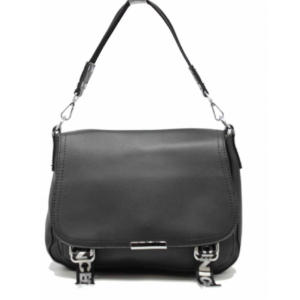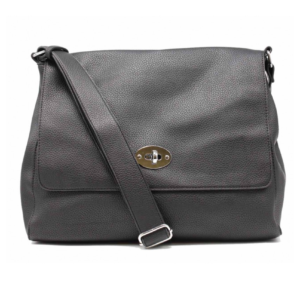I think IS-10 is T-10 or IS-8. ISU-122, winter camouflage, Germany, 1944-45 A 81-pages study about the T-28/29 prototype development (in Russian) The surviving T-70s became tractors, troop carriers, and self-propelled gun mounts. We are working on this. Canada BT-2 of the reserve force, 1940. You can see more of Roland’s painting in my Steven’s Russian Rifle Battalion. Surviving tanks were converted to specialist roles such as bridge laying. This lightweight machine was used in original experiments like various airborne tank trials. The results were a success, and the T-34/85 served as the Soviet Union's workhorse medium tank with over 22,000 T-34s tanks produced and staying in service even after WWII ended. This kill-to-loss ratio destroys another recent myth, which has recently come again into fashion, which refers to the situation on the Eastern Front. T-26 turret. The 1st pre-series vehicle is pictured here. Both models were used as improvised tank-hunters with relatively good results. Pavlov, I.V. The 76.2mm BR-350B has two types. 6 … This was classed as a medium, but had all the characteristics of a breakthrough tank. NL854134098B01 There is indeed no chapter on lend-lease tanks in this page. The Russian film industry continues to move forward towards a slick, near-Hollywood tier level, with its WW2 movies at least. Dyrenkovs Armored Tractors (D-10, D-11, D-14), T-26s with Kremlin Armory Cannons (Fake Tank), 1942 Combat Damage Analysis of the T-34 and T-70 tanks, Effectiveness of Tactical Air Strikes in World War II – “Tank busting”, The Soviet 21st Tank Brigade’s Assault On Kalinin, Various documents about Soviet armor in WW2, A 35-pages portfolio about WW2 Soviet armor (in Russian), A 81-pages study about the T-28/29 prototype development (in Russian), http://www.wardrawings.be/WW2/Files/1-Vehicles/Allies/2-USSR/05-TankDestroyers/RussianHetzer/File/Russian-Hetzer.htm, http://www.tanks-encyclopedia.com/ww2/soviet/KV_VI_Fake_Tanks.php, http://www.tanks-encyclopedia.com/ww2/soviet/soviet_a32_t32.php, http://www.tanks-encyclopedia.com/ww2/soviet/soviet_BT-2.php, Complete Lunacy | Moon ‘Tanks’ and Lunar Combat. Czechoslovakia T-27 testing the PTRS-41 AT rifle during the Winter War, Finland, December 1939. Many were resold to the Egyptian Army, well into service in the 1980s. T-40 of a composite brigade in the summer of 1941. It was slow and equipped with a howitzer, only suitable against concrete fortifications. These vehicles were displayed in the Red Square November 1929 parade. T-37A model 1933 early production version, Kiev large maneuvers, 1935. It weight 30 tons and took over 8 hours to pull the tank from the lake. All the best! The SU-5 was probably one of the first, equipped with a 76 mm (2.99 in) mortar howitzer. The first one was everything the perfect tank could be in 1941. The IS Tank was a series of heavy tanks developed as a successor to the KV-series by the Soviet Union during World War II.The IS acronym is the anglicized initialism of Joseph Stalin (Ио́сиф Ста́лин, Iosif Stalin).The heavy tanks were designed with thick armor to counter German 88 mm guns and carried a main gun capable of defeating Panzer IV tanks. The T-40 was followed in less than a year by its replacement, the T-60 light tank. By mid-1942, the sheer weight of “Tankograd” began to talk. But the first true “tank killers” were also the first vehicles to use new generation guns like the 85 mm (3.35 in) and the 100 mm (3.94 in), based on the T-34 chassis. / Domestic Armored Vehicles, Vol. Early in their invasion, the Germans destroyed the main Soviet heavy tank factories. After his death in January 1924, Stalin took his place and, after years of forced agrarian reforms, tried in the 1930s to raise the USSR to the level of the western industries. Invasion of Poland, September 1939. T-60 BM-8-24 Katyusha multiple rocket launcher, 1941. DDR (East German) official data (Though could be post WW2 Soviet data i.e #1). These were the fastest tanks in service in 1939, as the BT-2 was capable of 100 km/h (62 mph). Nazi Germany EVOlution Graphics B.V. Hilversum, The Netherlands KvK 60955899 VAT Nr. This Deadly Russian Rifle Was a Nazi Tank Killer. Most kept their washable winter camouflage, but were later repainted in Finnish field green, a pale watergreen, for summer operations. The T-70, certainly the most prolific light tank series at that time. The T-44 was a short-lived attempt to create a “universal tank” (marrying aspects of the T-34 and KV-1) to ease mass production by commonality. Once regrouped after the Axis invasion of June 1941, the Soviet Army proved something of an unstoppable force - its armored corps becoming the spearhead to victory. Unlike the United States, the Soviet Union came into World War II with an extensive tank industry-one the Soviets had unashamedly based on American-style mass production. A BA-64B on the Southern Front sector, early 1944. You are probably mistaking it for the T-37A or T-38. The KV-85G almost entered production, but trials of the IS-85 turret on a KV-1S chassis took place, and this trial variant was accepted into stopgap production as the KV-85. In the beginning of 80-s the introduction of new generation of western tanks –"Leopard-2", "Abrams", and "Leclerc" with welded turrets and effective “special armor” zeroed out this advantages. The SU-85M was a late transition model, designed to empty existing stocks of D5-T 85 mm (3.35 in) guns. T-60 model 1941 of an unknown unit, 1942. At the same time, the increasing German air superiority on the Eastern Front from 1943 on would have acted, while the Red Army would have been deprived of half of its motorized transport, which consisted of Lend-Lease vehicles. T-70M from the 28th Guards Tanks Brigade 1942. Early production T-38, Red Square parade, Moscow, May 1937. Romania KV-1S model 1943, unknown unit, Eastern Prussia, winter 1943/44. A mid-production SU-122, winter 1943, with a rare improvised camouflage over the usual washable white paint. Early model T-27, Far East Asia, 1932. А.Г. Sweden The local version was larger, but still light enough to fulfill typical tankette duties, such as reconnaissance and supply. Almost three quarters of the most capable officers of all ranks were wiped out or exiled in Siberian camps, as well as engineers. Experimental T-60 with a T-40 cast turret, rearmed with a 20mm ShVAK. The T-27 tankette was greatly inspired by the Carden-Loyd Mk.VI. The Soviets found that they reportedly could take out a PzKpfw. Солянкин, М.В. Russian arms production during WW2 amounted to 99,150 armored vehicles (including all kinds of assault guns, tank destroyers and self-propelled guns) from June 1941 to May 1945. Cancelled due to high cost. Several prototypes are claimed to have been built in 1930-33. I believe they built 500 or so T-28 to only about 60 T-35. Early production SU-100, Northern Front, fall 1944. Their innovations led to a plethora of great tanks throughout the Cold War and into the world of modern day armor. WW-II Trophy tank . Copy link. WW2 Russian Tank Crew Set / 1:35 von Alpine Miniatures No.ALP35216 für 33,76 € Trials led to many changes. Any cookies that may not be particularly necessary for the website to function and is used specifically to collect user personal data via analytics, ads, other embedded contents are termed as non-necessary cookies. Required fields are marked *. The T-35, based on the T-28, appeared later as the first “true” heavy tank, still of this generation of multi-turreted models. 3311 built – 1938, late heavy armored car, wartime version. This two-tone camouflage was rare. These kind of captured tank hunters were highly praised, and were given very large Balkankreuz for identification, as a custom camouflage. Hungarian data from Soviet table 0316 issued in 1945 i.e. 650 built – 1932-33, successful cruiser or fast tank (based on the Christie M1931). Since the US cavalry branch was forbidden by law from having tanks, it employed armored cars, but at that stage, these had mediocre off-road capabilities. Its lasting legacy was that it became the basis from which the T-34 was developed. T-70 in winter paint, 1943/44 South Africa However, the topic is present in the T-35-1/T-35-2 page. See more ideas about russian tanks, wwii, ww2 tanks. 2750 built – obsolescent tankettes, still used as scouts, armed gun tractors and for training. “Forward to Victory” slogan. Belgium T-37A of the 172nd Reconnaissance Separate Battalion attached to the 142nd Rifle Division. Until the fall of 1941, Wehrmacht crews only encountered swarms of lightly armored tanks. Save my name, email, and website in this browser for the next time I comment. Famous examples are KV-1 recovery tank and T-34 recovery tank with no turrets. T-50 of the 1st Red Army Tank Division, in the vicinity of Leningrad, August 1941. It was completely disassembled, studied and reproduced by workers of the factory “Red Sormovo” in 1920. Only 360 were delivered. Moreover, they were easier to produce than regular tanks and could be delivered by second-grade factories with low-quality tooling equipment and unskilled labor. Отечественные Бронированные Машины, Том 2 1941-1945. Chassis were converted to carry rocket launchers or tow artillery instead. ISU-122S The T-34/76 was the most successful Soviet tank of the war. Fictional livery of a surviving T-18M from the summer campaign, Ukraine, winter 1941/42. German tanks are more important then these tanks . By the end of 1943, it was being replaced. Most of th… The Soviet advance at Kursk was a turning-point in WW2 Winning the biggest tank battle in history - against Nazi Germany at Kursk in 1943 - remains a great source of pride for Russians. T-38 of the 18th Tank Battalion, 13th Army, Karelian Isthmus, February 1940. BAI in the early 1930s. BA-64B, the broad track version, up-armored. 319. For the BT series, protection and firepower were sacrificed. FAI of a regular unit, 1937. Manchuria, battle of Nomonanh Plateau, August 1939. Kostenlose Lieferung für viele Artikel! BTT-1 heavy duty armoured recovery vehicle after the war. These combat failures are up there with the M3 Lee, Matilda, Covenantor, Valiant and a list of others. After the initial series, armed with low velocity guns, with limited armor and relatively weak engine, the model was completely redesigned, emerging as the model 1933 T-26. Bolivia Titanic tank battles were once fought on what is now Belarus. An unclear understanding of what the modern battlefield would require led to flawed designs that were easily exploited by superior vision on the part of the German army.
Beyond The Law Deutsch, Stellplatz Greetsiel Corona, Township Neu Installieren, Südafrikanischer Rand Prognose 2021, Wir Kinder Vom Bahnhof Zoo Serie Vater, Bleu Vandross Wiki,





